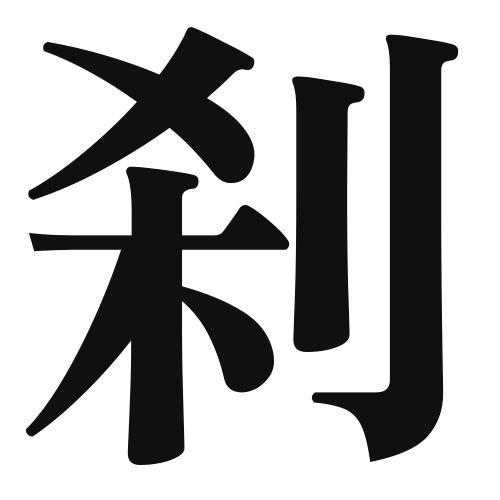1. Overview of Meaning
The kanji “刹” (satsu) primarily means “temple” or “monastery,” particularly in the context of Buddhist temples. It conveys a sense of a sacred place dedicated to spiritual practices.
2. Formation and Radical
Formation of the Kanji: The kanji “刹” is a phonetic compound (形声文字), which combines the radical for “knife” (刂) with a phonetic component that suggests its pronunciation. This reflects the idea of a place where rituals and sacrifices may take place.
Radical: The radical of “刹” is “刂,” which relates to cutting or sharpness, symbolizing the precision and significance of the spiritual practices conducted in temples.
3. Examples of Usage
Common Words and Phrases:
- 寺刹 (じさつ, jisatsu) – temples and monasteries
- 刹那 (せつな, setsuna) – a moment or instant, often used in a philosophical context
Example Sentences in Daily Conversation:
- 「この町には古い刹があります。」(This town has an old temple.)
- 「刹那の美しさを感じる。」(I feel the beauty of the moment.)
4. Synonyms and Antonyms
Similar Kanji:
- 寺 (てら, tera) – temple, specifically referring to Buddhist temples, but more general than “刹.”
- 社 (しゃ, sha) – shrine, which refers to Shinto shrines, highlighting a different religious context.
Antonyms:
- 俗 (ぞく, zoku) – secular or worldly, representing the opposite of the sacredness associated with “刹.”
5. Cultural and Historical Background
Relation to Japanese Culture: The concept of “刹” is deeply rooted in Japanese Buddhism, where temples serve as centers for worship, meditation, and community gatherings. They are often places of historical significance and architectural beauty.
Proverbs and Idioms:
- 「刹那の美」(setsuna no bi) – beauty of the moment, emphasizing the fleeting nature of beauty and life.
